#fude brush
Text


i decided on a storage solution for my vanity - this is how i store my fude brushes. eye brushes are in the drawer right above this one.
from left to right, 3 foundation brushes and 4 face brushes:
Houkohodou BZ-2
Mizuho CMP508
Mizuho CMP507
Koyudo 2307-08 (Sample)
Koyudo H03
Bisyodo BS-HC-01
Bisyodo BS-C-01
all are made of goat hair, except for CMP507 which is synthetic PBT, and the silly little Koyudo heart brush which is a goat and synthetic blend.
as with many of my interests, i just want to have what i need and like to use. 😌 i'll be writing up more in-depth reviews on my blog for each brush, by category, because i am just like this as a person
4 notes
·
View notes
Text




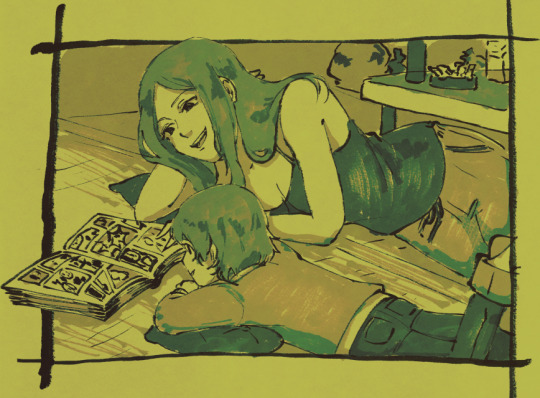



some (mostly) request sketches from last year
1K notes
·
View notes
Text
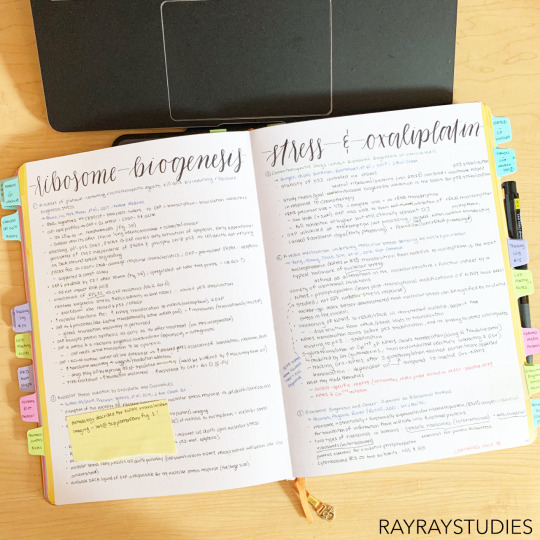

I will likely not be going down the ribosome biogenesis stress pathway any time soon as my results have lead me down a different avenue, but hey, at least I have all these notes and diagrams??
✍ Archer & Olive Bullet Journal, Uniball Signo RT1 UMN-155, Pentel Fude Touch Brush Sign Pen, Zebra Mildliners
ig: rayraystudies|| links: carrd
#studyblr#studyspo#studyinspo#archer & olive#uniball signo#pentel fude touch brush sign pen#zebra mildliners#ray ray studies
59 notes
·
View notes
Text



Digimon Tamers x DIGIGIFT
~ Takato Matsuda & Guilmon
+ Official Digimon Art
+ New Year{s} (of the Dragon)
{Autotranslation is by Twitter,
Not 100 percent accurate but close enough to get a grasp of!}
(i.e. "We would like" here, not "I")
Support the official post at the link here!
This is from a series of calender months-based artworks featuring various Digimon characters from various series.
Last year also showcased previous Leader characters,
along with some others.
This years' post reminds us about Digimon's 25th anniversary as a franchise while also commemorating the
"Year of the Dragon" of the Chinese zodiac!
Takato Matsuda is pictured wearing traditional Japanese clothing consisting of Japanese kimono with hakama pants.
Takato is partaking in shodo, Japanese calligraphy art, using a calligraphy brush and black ink to draw Guilmon.
(Per the link): Nowadays shodo is not just an art form to be admired; people use it to write nengajō (New Year's cards), and it has become a part of their daily lives.
From Wikipedia:
The Dragon, also known as Loong, (simplified Chinese: 龙; traditional Chinese: 龍; pinyin: lóng; Jyutping: lung; Cantonese Yale: lùhng) is the fifth of the 12-year cycle of animals which appear in the Chinese zodiac related to the Chinese calendar. The Year of the Dragon is associated with the Earthly Branch symbol 辰, pronounced chen.
People born within these date ranges can be said to have been born in the "Year of the Dragon",
while bearing the following elemental sign...:
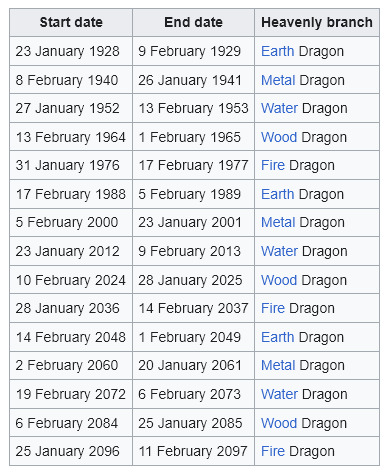
While the "Digimon Adventure" anime series first aired in 1999,
Digimon as a franchise actually began around June 1997!
The official account is acknowledging that the Digimon series' 25th anniversary will take place during the "Year of the Dragon" in 2024.
In Japanese fandom it is popular to draw and illustrate various anime and manga characters with relevant Chinese zodiac motifs as the year changes.
The official Digimon account has already posted another artwork featuring Dragon Digimon, and this one is the second posted!
(Third if you count this one)
#matsuda takato#takato and guilmon#official tamers#digigift#official guilmon#izzyizumi tamers#izzyizumi posts#theme: fude brush#theme: sumi#official takato#(I want this in full with the tweet)#(so Im posting a Tamers post for once)#(also because)#(TAKATO MY HEART)#takato matsuda is a good character#takato matsuda is a good leader#(I was really happy to see theyre continuing these)#(but if theyre going on all year I hope we get human charas besides just the leaders and '''rival''' or lancer types too)#(I dont normally make posts in Tamers side of fan base but)#(I still appreciate the characters and I generally do my own thing with them when including them in my stuff now)#(So Please Be Kind On This Post)#(and do not make this post about any series not Tamers or any other character or leader not Takato)#(I still have blogrules that Should Still Be Followed Thankyou)
3 notes
·
View notes
Text
this Sailor Fude De Mannen has a bent nib, which looks weird but gives a ridiculous amount of line variation. Fude comes from the Japanese for Brush, and while i don’t think this is a substitute for a brush pen, it’s definitely a nice, unique experience.

3 notes
·
View notes
Text
Pen Review: Pentel Fude Touch Brush Sign Pen 2020 Colors (12-Color Set)
On Friday, I talked about how much I love the Sai Watercolor Brush Pens. What I realized recently is how much I also love the Pentel Fude Brush Sign Pens. I have had one or two of this pens floating around the Desk and frequently reach for them for my daily journal and planning needs but really wanted to have more than just a couple colors so I ordered the 2020 New Color 12-color set ($23) from…

View On WordPress
6 notes
·
View notes
Text
Shiseido ~ have you tried their makeup?
Shiseido ~ have you tried their makeup?
Have you tried any makeup items from Japanese brand Shiseido? Sephora carries some of their products and there is a Shiseido US online shop as well. Shiseido is one of the oldest cosmetic companies in the world, as it was founded in Ginza, Tokyo in 1872. There are also many other Shiseido products that aren’t sold in the USA market, but you can find them on Japanese online shops, Amazon Japan…
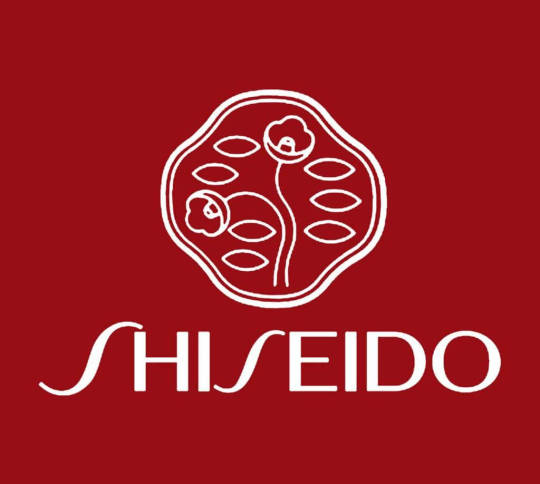
View On WordPress
#affiliate links#blush#Daiya Fude Face Duo Brush#foundation#Future Solution LX Total Radiance Foundation Broad Spectrum#japanese beauty#japanese makeup#jpbeauty#makeup#makeup brushes#Maquillage Snow Beauty Compact#Minimalist Whipped Powder Blush#shiseido#Synchro Skin Glow Cushion
2 notes
·
View notes
Text

Wrapped in washi paper with elegant flower designs, these Flower Fude Brush Pens use black water-based ink and have synthetic nibs that draw fine lines to thick strokes smoothly.
#product#product design#industrial#industrial design#japanese brush pens#japanese fude brush pens#brush pens#flower design
0 notes
Text
Artwork Spotlight - Komainu
Little focus on one of the artworks I've created recently. Komainu in brush pen.
As part of the run up to Hyper Japan (only a few days to go!) I thought it would be fun to look into one of the pieces I’ve made for it in a little detail.
When I was first deciding what I should create for Hyper Japan, the place I initially looked was the various sketchbooks that I took with me on my trip.
In my ‘main’ sketchbook I found this sketch that I’d done while waiting in Starbucks,…

View On WordPress
#artist#brush pen#brush pen art#fude#hyper japan#ink drawing#Japan#komainu#kuretake#kyoto#lion dog#travel#Travel Japan
0 notes
Text
heian era sukuna x reader →
(a/n: loosely inspired by that one jessica rabbit scene; this is also borderline uraume/reader bc theyre so cute ugh)

people don’t understand how you can love the king of curses. his figure was grotesque—beyond repulsive—with four heavy hands that could snap your limbs into two if he so pleased. they can’t get past the four eyes either, but you found them charming. how could you not when he looked at you so sweetly?
“where is my husband?” you inquire for the nth time, your voice as sweet as molasses as you tug at the ends of uraume’s sleeves. the humble servant doesn’t answer immediately; they know not to, and you don’t mind. while you wait, you watch the passerines tease the fish in the pond from your spot on the engawa.
uraume dips their elegant fude into the shallow inkstone beside you. calligraphy and whatnot. “lord sukuna is tending to matters in the southern provinces,” they answer with the same amount of patience they had a few minutes ago, and an hour before, and another before that. they must be used to it now.
“do you think he misses me?” comes a light brush against their pale hand. uraume exhales through their nose at your question, but not from exasperation. never that. “yes,” they say with utmost sincerity, like it’s gospel truth, before painting one long, flourishing stroke. “very much so.”
content, you cease your ministrations and fall on your back, giggling at the way your hair splays beneath your head. “he loves me,” you coo and cup your sun-kissed cheeks. “my husband loves me, and i love him too.” you think the edge of their lips twitch up into the barest hint of a smile.
but it vanishes before you can get a proper glimpse. sighing, uraume gives you a knowing look from the corner of their eye as they dip their fude back into the inkstone. you turn to lay on your side and watch how it absorbs the ink. “the servants, though adequate, have been quite bothersome lately.”
they finish the kanji in several swift strokes. 麗. rei for beauty. uraume continues. “there’s ill speak of your relationship with lord sukuna.” you count the passerines, letting the unspoken question hang in the air. shall i do something about it? it’s uraume’s turn to wait patiently for an answer, an ultimatum.
but you don’t give one so easily, preoccupied with an image that resurfaces in your mind: a group of servants—fresh off the cut and eager-eyed—gossiping by the water well. you don’t think they saw you, unless they were stupider than you thought, but they were loud enough to hear.
uraume is watching you, properly now, as you blow a stray strand of hair from your face. when they lean in to gently tuck it behind your ear, persimmons and plums permeate your senses. “do not bother with them. they talk because they do not understand why i love him,” you decide with finality.
“and why do you love him?” there’s a hint of fondness in their voice, reserved for you.
you look up through your delicate lashes, smiling cheekily. “he makes me laugh.”

(masterlist) | (a/n: would yall hate me if I wrote uraume/reader's pls be honest)
#jjk#jujutsu kaisen#jujutsu kaisen sukuna#sukuna x reader#sukuna ryomen#sukuna ryomen x reader#jjk sukuna#sukuna x you#uraume
3K notes
·
View notes
Text
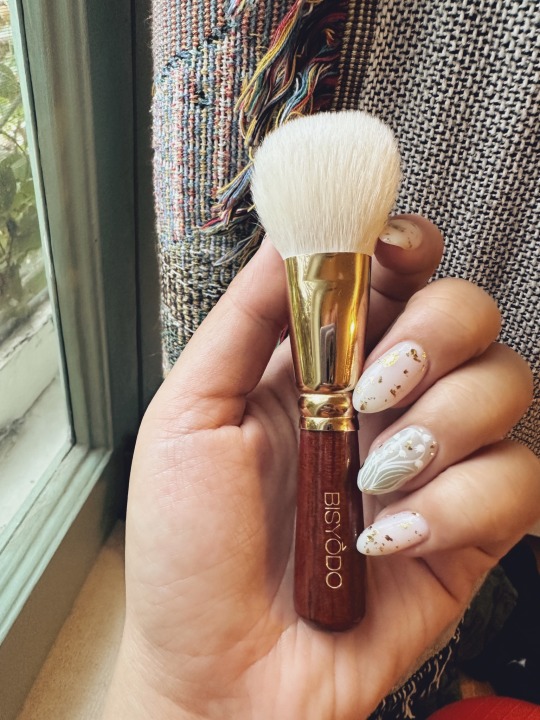
my first fude brush from bisyodo. bs-c-01. saikoho goat hair. 🥹 i have another order on the way to replenish and upgrade my old makeup set-up.
i really love that fude companies from japan have historical lore - most of them are descended from calligraphy makers who pivoted into cosmetic brushes as a means to staying in business, and some companies still make calligraphy brushes to keep the art alive! most companies will offer vegan versions ad well, made with the same handcrafted skills. so if you need a micro hyperfixation coping mechanism, here's one. 😌
#content: seams_witch#fude#bisyodo#makeup brush#synthetics will never beat natural hair allegations i fear
4 notes
·
View notes
Text

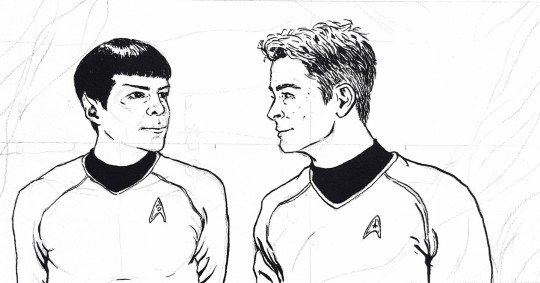
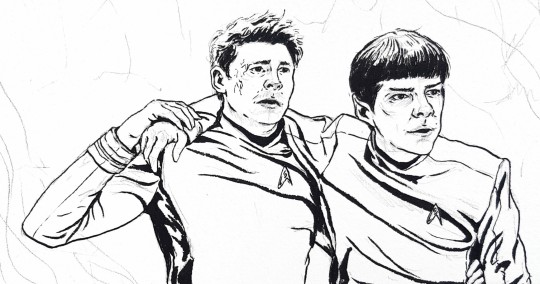
Way back in April, I was working on my piece for the Star Trek AOS @aosrenaissance zine. I'd originally planned a four-panel comic, but true to form I only managed to get the main, fourth panel painted in time. However, I did ink the other three, and here they are! Pulled out of my WIPs drawer to finally get painted and finished soon, watch this space.
Inked with dip ink pen, Indian ink, and Pentel fude pigment extra fine brush pen on cold pressed paper, each approx A5 size
314 notes
·
View notes
Photo

One of the more important things to consider with cell work is acknowledging that the concentrations of drugs used don't always translate to what is relevant in a clinical setting - I spent a weekend reading ~10 different papers/databases from 4 different countries to find the relevant doses of oxaliplatin to convert to usable concentrations for my cell work. This is the result of that...
✍ Archer & Olive Bullet Journal, Uniball Signo RT1 UMN-155, Pentel Fude Touch Brush Sign Pen, Zebra Mildliners
ig: rayraystudies || links: carrd
#studyblr#studyspo#notespo#bullet journal#bujo#archer&olive#pentel fude touch brush pen#uniball signo#zebra mildliners#ray ray studies
73 notes
·
View notes
Text
Ink!Sans Cultural Character Coding
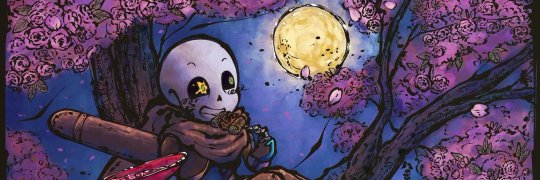
art by @/sakuramochi64 on twitter
Disclaimer!
This post is meant to present and analyse obvious and obscure East Asian (Jpn-Chi) ethnic and cultural influences on Ink!Sans character.
If any of the material in this essay is incorrect and/or considered morally offensive, please contact me!
Ink!Sans by @comyet
↓↓↓↓↓↓↓↓↓↓↓↓↓↓↓↓↓↓↓↓↓↓↓↓↓↓↓↓↓
/Despite the fact that Ink is a non-human monster skeleton character, he is often portrayed with human-like traits and characteristics that range between a bunch of topics. One of them that's portrayed as very predominat to his character is his etchnic cultural background/inspiration. Again, this post is meant to analyse and to discuss such inspirations and how it affects his character./
.
.
.
INSPIRATIONS
According to Ink's creator, Comyet, the concept of Ink!Sans was conceived by a Japanese and Chinese ink calligraphy brush. These are known as Fude brushes (筆) and Xuan brushes (宣笔 Xuān bǐ) respectively. This ultimately inspired his ink abilities and powers, just like his concept of being an 'artist' (In simple words, it inspired Ink as a whole).
'The history of ink brushes and the ink material is a long and complicated journey to cover, but it's important to know that these were invented in ancient China around 300 B.C (traditional Chinese: 毛筆; simplified Chinese: 毛笔; pinyin: máo bǐ) and are used in a vast variety of East and Southeast Asian countries, like Korea; Vietnam and Japan.
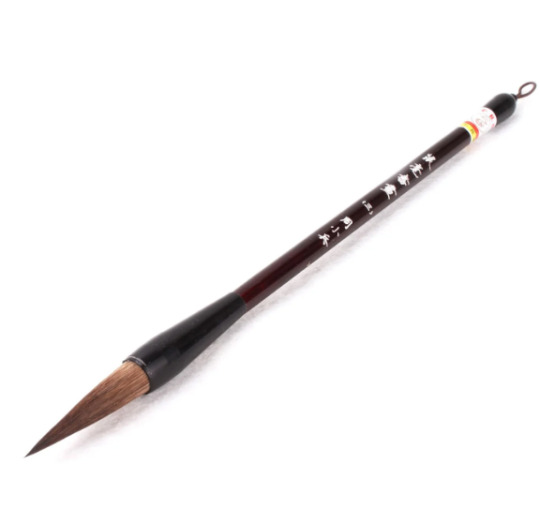
example of the brush Ink!Sans was inspired by.
At glance, ink (the material) is an enduring medium that still surrounds society till this day and it's used in multiple cultures across the world.
Writing with ink calligraphy brushes are common in the Europe and the Middle East as well, but the material was crafted of iron salt and oak galls. When written, ink is often a dark color but fades to brown tones of rust'. Such phenomenon was detectable in the Middle Eastern Bible manuscripts and even ancient European literature as an example.
Ink!Sans was based of the ink material created in East Asia, most commonly made with carbon-base black substance, which preserverd the dark coloration even after hundred of years.

↑ Example of an ancient Japanese painting, such arts are called 'Sumi-e' (Japanese, 墨絵) or ' Shuimohua' (traditional Chinese,水墨畫).
Unlike iron gall ink, carbon based inks are still very common to this day.
'Throughout the long history of East Asia, writing with ink was a very important ability to have. The Materials were made with precision, long traditions of training in calligraphic skills were developed, and writing and literacy were often wrapped up in questions of social status and class.
Although the development of major Chinese calligraphic scripts was completed by the fourth century, the art of calligraphy continued to evolve over the millennia. Master calligraphers with years of training and dedicated practice were recognized for their personal styles, and later generations of artists often adapted brushstrokes and designs to their own style. This stylistic evolution of scripts continues to enliven Chinese calligraphy to the present day.
Calligraphy was an important mark of personal learning and aesthetic sensibility in Japan. Portable, lacquered wood boxes were designed to hold an inkstone and water dropper in the base, with trays to hold writing brushes and solid ink sticks. Inkstone boxes (硯箱,suzuribako 'ink stone box' ) could be easily carried to a pleasant location, even outdoors in fine weather, to write correspondence, diary entries, or poetry.'
Fun fact: Ink's font 'Note This' is inspired by such ancient writing.

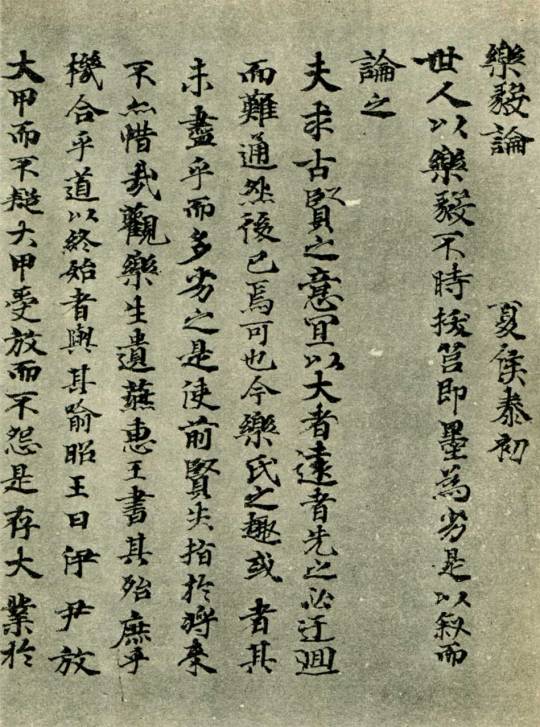
Example of Ink's canon speaking font and Japanese calligraphy (書道, calligraphy)
'However, when it comes to the subject of painting with the material, different schools of painting existed in China, the scholar-painters of Song-dynasty China generally preferred ink-based paintings over the more colorful, pigment-filled paintings produced historically and at the painting academy. Chinese painting manuals and commentaries from the Song (Sung) and Yuan dynasties (rarely mention pigments, possibly because it was assumed a painter’s skill shouldn’t depend on the use of colors.
Japanese artists are known for using media appropriate for the subject matter. Images depicting traditional Japanese narrative tales were typically rendered in opaque colors with outlines created in ink and later obscured by color overlay. Ink monochrome was closely associated with Chinese styles, particularly those transported to Japan via Zen Buddhism. Ink-based forms created with modulated strokes and layered washes suggested introspection and spiritual exploration.'
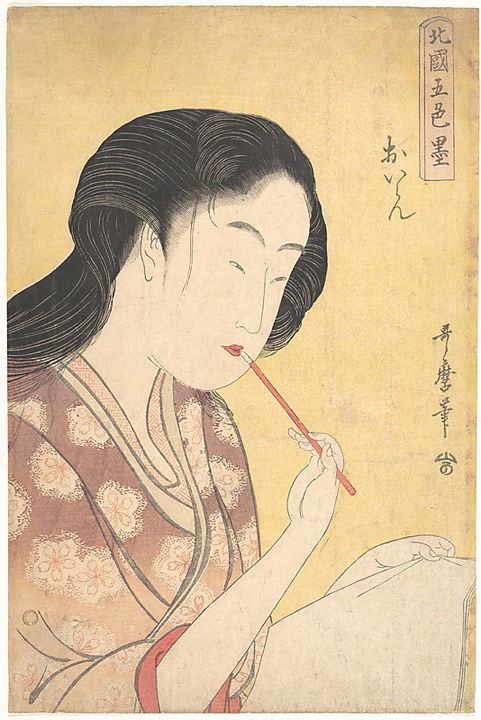
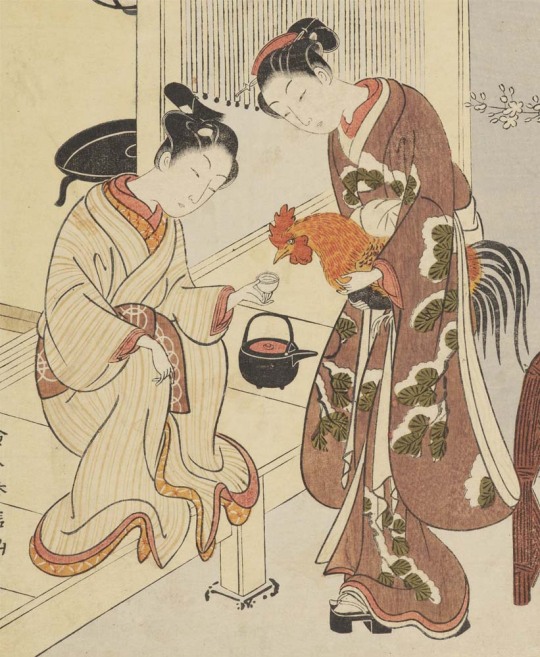
Ancient Japanese paintings that uses dull colors and ink outlines.
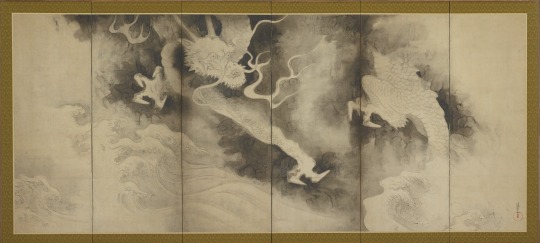
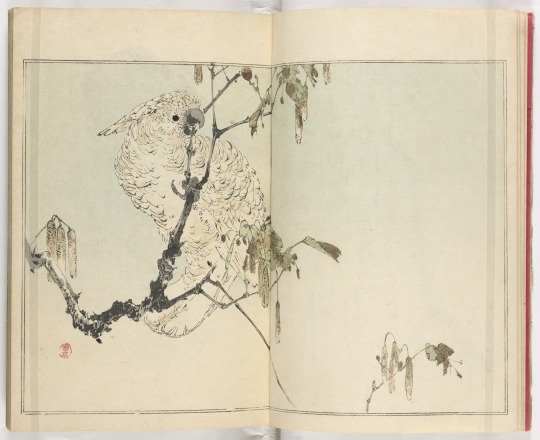
Exhaustive examples of ancient Ink paintings. Dragons and Clouds 雲龍図屏風 (左隻)and Seitei kachō gafu 省亭花鳥画譜
.
.
.
DESIGN
Also clarified in an ask on her main blog, Comyet describes that traditional Japanese clothing inspired Ink's 2020 outift redesing, such inspirations are very obvious in first and second analysis.
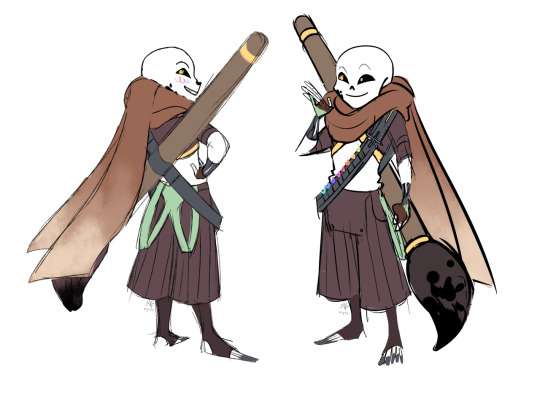
Ink!sans reference sheets for the 2020 design, which can be found in Ink's official F.A.Q
Starting off, the pants.
Ink's pants were inspired by Hakama pants (袴), a traditional Japanese garment designed as a skirt-like pants often worn over any type of kimono. His pants seems to be inspired by umanori (馬乗り)Hakamas, whose had a division in the middle and often used in horse-riding activities.

Example of a Hakama.
The Hakama is a wide pleated pants (seven pleats, five in front and two behind), with a rigid backrest (腰 板,koshi ita) placed at the level of the lumbar region. It is tightened with four straps, on the left and on the right, as well in front as behind.
Historically, the origins of the Hakama dates back to the Sui and Tan dynasty were this garment was worn by the Chinese imperial court. Later, the Hakama exported itself to Japan during the Kamakura period (1185 to 1332) and became a traditional garment for the upper classes of Japanese society as well as for samurai warriors who wore it over a kimono (Hakama-shita).
During the history of Japan, the Hakama took on different styles and was mainly made for men, although in the beginning it was a unisex garment. During the Asuka and Nara era (6th to 8th century), the Hakama came in two versions. The first one was open on the front and was tied on each side of the waist with two straps. The second one was open on the left side and closed on one side only.
During the Edo period, the Hakama was worn by the nobles as a complement to the outfits of the time such as the noshi and the kariginu (狩衣; a sleeveless jacket with very pronounced shoulders). Very functional, these pants were also adopted by samurai warriors who usually wore them as Kamishimo (上下/裃). It is a combination of kimono, Hakama and kataginu. When the warrior visited the shōgun, he wore a Hakama called naga-bakama which greatly restricted his movements.
Edit:Currently, hakamas are both worn by men and women.
However, under the scarft, Ink also seems to use a jacket that features a collar that has striking similarities to a Mandarin collar (or Mao collar)

Ink!sans reference sheets for the 2020 design, which can be found in Ink's official F.A.Q
Mandarin collars originated in ancient China and were worn by Qing-era bureaucrats.

Picture of a Chinese man in a traditional Mandarin collar (early 1900's)
These are short, stand-up collars and sometimes fasten in the center with a small hook. Such collars are still used today for both fashionable and practical reasons. One example of modern usaged of the clothing is seen in the U.S Amry combat uniform, that features a stand-up collar of Chinese origin.
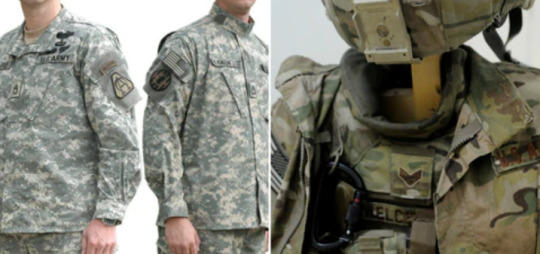
Picture of the U.S Army combat clothing
Regarding of color palette, Ink!Sans redesign uses soft but dull colors and a sinple silhouette and fabric for the outift, such design choises are similar to male kimono's dressing codes which uses dull colors (like dark blue, grey, green and occasionaly brown). Male kimonos are always more simple in design compared to female kimonos.
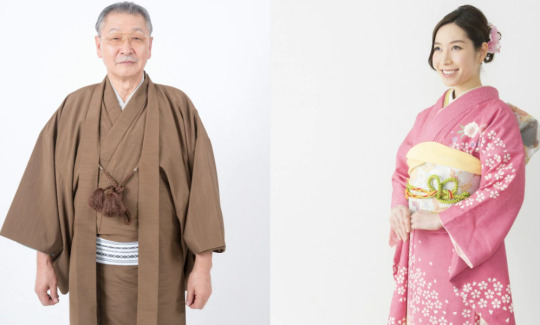
Photo that shows the difference of kimonos used by men and women
Although not specified, Ink seems to wear brown thigh-high socks, also known as 'tights' under the outfit. Japan has a long-standing cultural tradition of wearing such piece of clothing, this trend is particularly popular among young people and is often associated with the "gyaru" subculture, which emphasizes fashion, beauty, and individuality. Additionally, thigh-high socks are often worn with school uniforms, and are considered a symbol of youth and innocence. Additionally, it is also considered fashionable and trendy in Japan, and you can see many young people wearing them.
In regards of physical appearance, Ink also seems to follow ancient Japanese and Chinese beauty standarts, specially one's targeted towards women.
In ancient japan, specially towards the Nara (奈良時代, Nara jidai), Heian (平安時代, Heian jidai) and Edo period (江戸時代, Edo jidai) the beauty standarts for Japanese women were of those with slim eyebrowns, flat oval face shape and narrowed eyes.
Such attributes can be observed on Ink!Sans apperance.

Visual representation of old Japanese beauty standarts
/Keep in mind that some of such standarts presented are now out of fashion due to the westernization of asian countries. Specially regarding eye shape/
.
.
.
MUSICAL THEMES
Ink!Sans has a long history of being associated with East Asian music, specially those of Japanese origin.
Themes that comyet associated with him includes, 'Code Wu- Asia River Album 江水/Asia River' ( post can be found here), 'Dullahan under the willows' and 'Futatsuiwa from Sado (二ツ岩で佐渡) both from the japanese game 'Touhou'. (post can also be found here.
He's also associated with East Asian musical instruments, something quite noticeable in Ink!Sans theme for the the web-series 'Underverse'. Such theme is called 'Brushwork'.
The theme starts with an instrument similar to a Shamisen (Japanese-三味線) and a Guzhen (Chinese-古筝) and also uses a traditional flute.
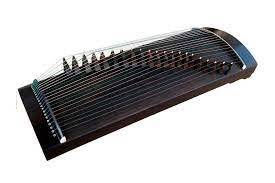
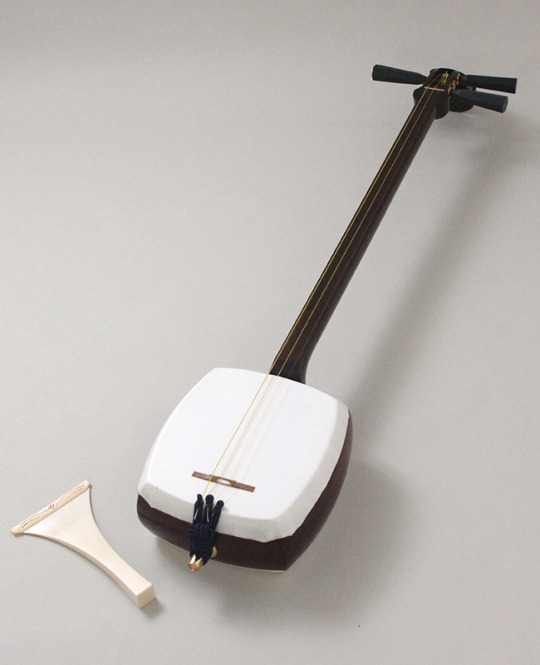
Photo of a Guzhen and a Shamisen, respectively
.
.
.
TRIVIA
On Underverse's opening for season 2, Ink!Sans can be seem between a field of Sakura trees or Cherry Blossoms (桜).
Cherry blossom trees are an icon of Japan. Some people even call the cherry blossom Japan’s informal national flower. The Japanese school year starts in April, during cherry blossom season. The flowers symbolize good luck, love, and springtime. Since they bloom for such a short time, cherry blossom trees also represent human mortality. They remind us how short and precious life is.
In the same series, Ink is also drawn in a Sumi-e inspired style for the 'Soulless Heart Instrumental' video. Such artwork features Japanese writing in black ink.
Ink's canon instrument is the flute. Although invented in ancient germany, the flute is highly associated with East Asian cultures and it's music, chinese and japanese culture are the main ones . Other than that, Comyet already made a connection to Ink's asian influence and the instrument itself.
According to research made by the University Microfilms International (UMI) affirms that the moderny performance and melody of the instruments has clear East Asian roots, mainly from Chinese and Japanese style of music.
'The flute is a particularly appropriate instrument for such a
study because of its versatility of pitch and timbre, the latter being
one of the most important elements in Eastern music; it is capable of
'pitch-bending' and infinite changes in tone quality which are impossible
to achieve on instruments of set pitch.
The flute music selected for stud/ shows varying degrees of Eastern
influence. Depending on the nature of the composition, the Eastern
elements may be extremely subtle and difficult for the untrained to
decipher; in other instances the composer makes clear those sounds or
concepts with Eastern roots, either through accompanying explanation or
within the context of the music.'
Sources
1.National Museum of asian art (materials & techniques. Ink section)
2. Asian Brushpaper (an-overview-of-chinese-ink-history)
3. Wikipedia (wiki Hakama-pants)
4. Aikido Journal (Hakama-101)
5. Wikipedia (Mandarin-collar)
6. Kirrin finch (What-is-a-mandarin-collar)
7. University Microfilms International (UMI) (east-asian-presence-in-modern-flute-music)
#ink sans#inktale#undertaleau#utmv au#ink!sans#utmv#inksans#undertale#east asian#au sans#sans au#cultural inspiration
281 notes
·
View notes
Text
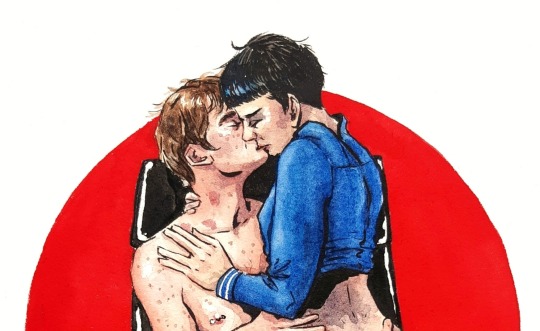
So excited to finally be able to share my piece for @wildheartzine, a free NSFW AOS Spirk digital zine! Here's Jim and Spock indulging in a fantasy in the captain's chair.
Pentel fude pigment brush pen, watercolour, and white ink on hot pressed paper, A5 size
Full (E rated) image HERE or on AO3
and do go check out the FREE zine for so much more incredible art, fic, and other works 👀
#wild heart zine#star trek fanart#star trek aos#aos spirk#spirk#my art#my trek art#star trek#aos#star trek art#watercolour#brush pen
68 notes
·
View notes
Text


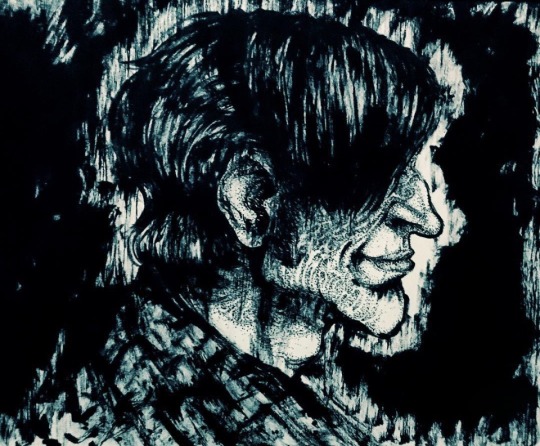
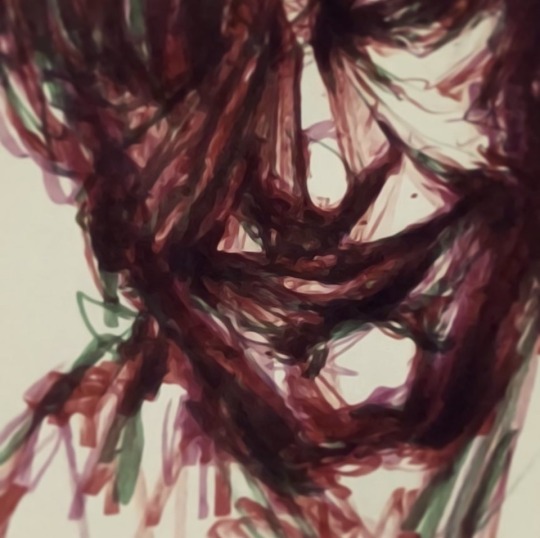

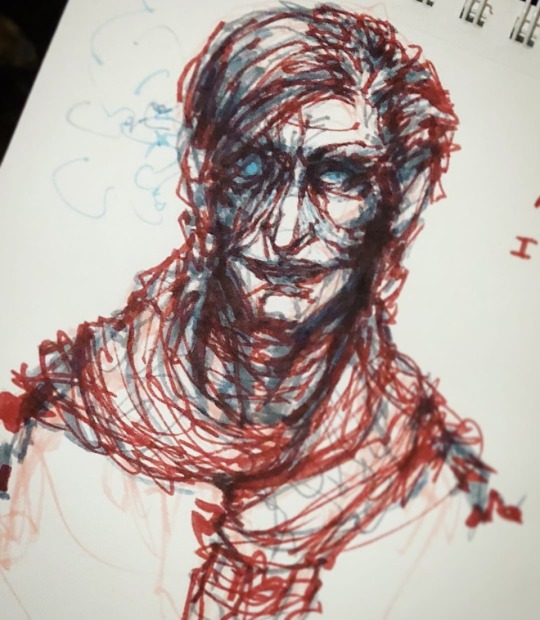
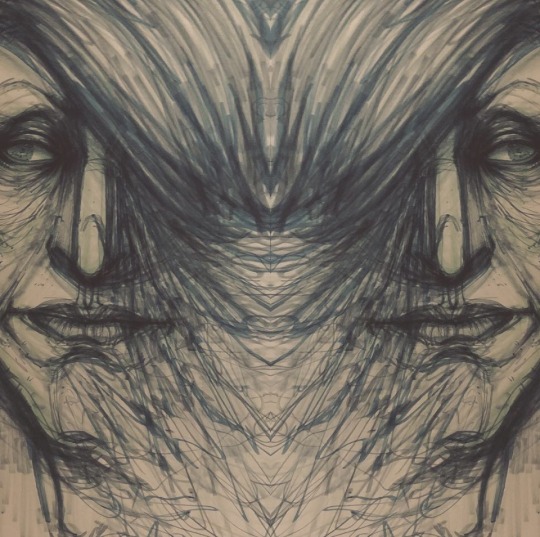
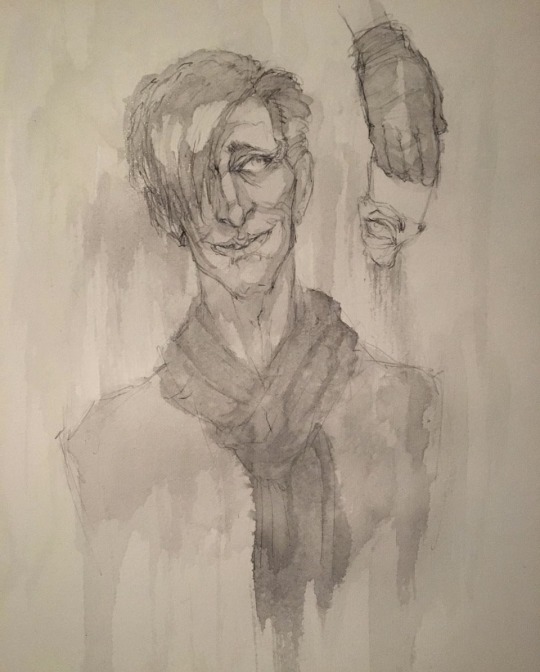
2017-18 work. vine charcoal, brush & ink, micron & pentel fude, crayola supertips, watercolor
#the evil within#the evil within 2#stefano valentini#survival horror#evil within#psycho break#psycho break 2
51 notes
·
View notes